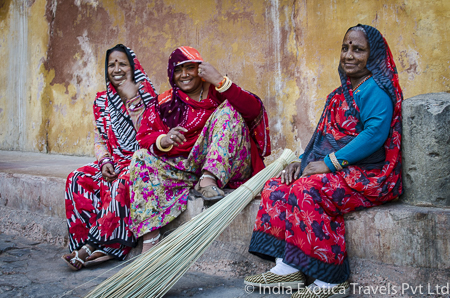
Resplendent, intricate, and varied, India’s textile tradition is a kaleidoscope of colors and cultures. Since ancient times, textiles have been associated with important rituals and social occasions in India. Sacred sculptures are traditionally clothed, and strips of cloth are hung on trees and poles as offerings around Hindu shrines. Cloth is given when a baby is born and when a man reaches 60 and renews his marriage vows with his wife. Textiles became political when Gandhi’s call for hand-spun Indian cloth—and thus less reliance on British goods—turned into the rallying cry for independence in the 1940’s. In fact, India’s history is so interwoven with textiles that it is hard to separate the two. Cotton and silk are indigenous, and when weavers discovered how to make colorfast dyes, Indian fabrics were the envy of the world. One of Alexander the Great’s commanders, upon arrival in the subcontinent, marveled that Indian cloth "rivaled sunlight and resisted washing." The closely guarded secret of the dyes led the British to establish trading posts in Gujarat in 1613 and Madras (now Chennai) on the southeast coast in 1640. The Dutch and the French followed with their own ports nearby. Gujarat & Rajasthan important textile centers to this day. In this tour we will visit some of the most rural villages in the backcountry to see the local villagers produce some of the most amazing work on textile.










